If you’re a beekeeper or an aspiring beekeeper and you’re lucky enough to spot a swarm of bees, you’ll surely want to gather them up and take them home. How do you do that, and what do you do after you’ve gotten them home? In this article, we discuss what to do after catching a swarm of bees & more.
What You'll Learn Today
- Wear Your Beekeeping Suit!
- Bee Swarms Are Surprisingly Easy to Gather
- Determine Whether You Have the Queen
- Don’t Rush!
- Make Sure The Bees Have Enough To Eat
- When Are You Most Likely To Find A Swarm Of Bees?
- How Can You Tell If Your New Bees Are Happy?
- Frequently Asked Questions
- Q: Is swarming always an indication that a bee colony has become overcrowded?
- Q: How do I know that a swarm is honey bees, rather than wasps or some other sort of social insect?
- Q. What should I do if I don’t want a swarm of honey bees?
- Q: What if a swarm of bees invades my hummingbird feeders, birdbath or other yard features?
- Q: What time of year is best for catching a swarm of bees?
- Q: Is a group of bees always called a swarm?
- Q: What does the term “bees knees” mean?
- Q: Why do we say we are “making a beeline” when we go straight to a destination?
Wear Your Beekeeping Suit!
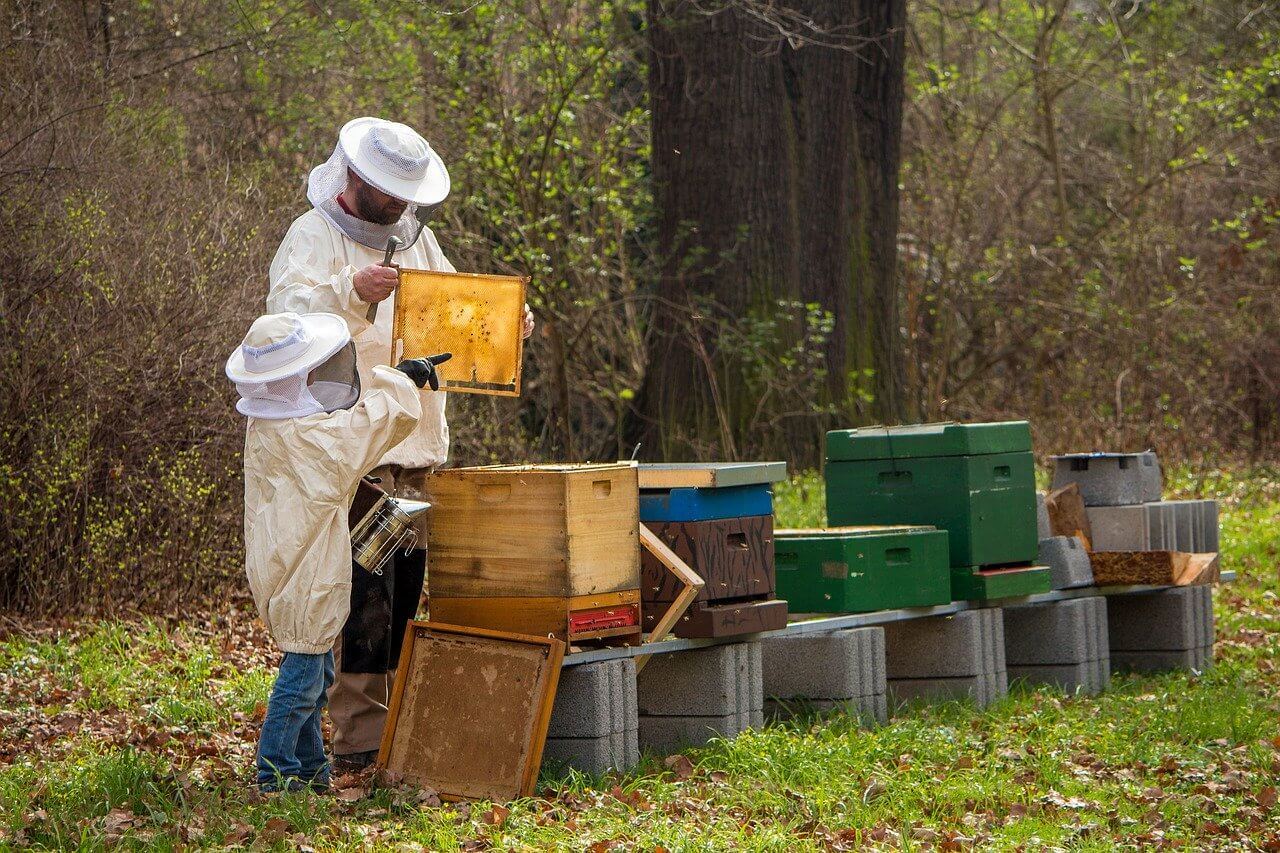
Bees swarm when the hive has become overcrowded and/or a new or second queen has emerged. Typically half the hive will swarm, so this means a group of about forty thousand bees all gathered together in a clump.
For standard honeybees, their behavior at this time is quite docile. They are focused on finding a new place to live. Even so, you should always suit up when handling bees. Getting stung even once is not a happy experience.
Bee Swarms Are Surprisingly Easy to Gather
If you see a swarm of bees clustered on a tree branch, it is amazingly easy to shake them off into a cardboard box or plastic tote.
An alternative to shaking the bees into a box for transport is to simply cut off the branch that they’re resting upon.
If it’s a thin branch and this is easy to do, it may be the best way. Then you can just transfer the entire branch into your box for transport.
Once you’ve shaken the bees into your waiting box, you should wrap the container in a large sheet, tarp or other cloth to keep the bees inside as you move them to their waiting hive.
Determine Whether You Have the Queen
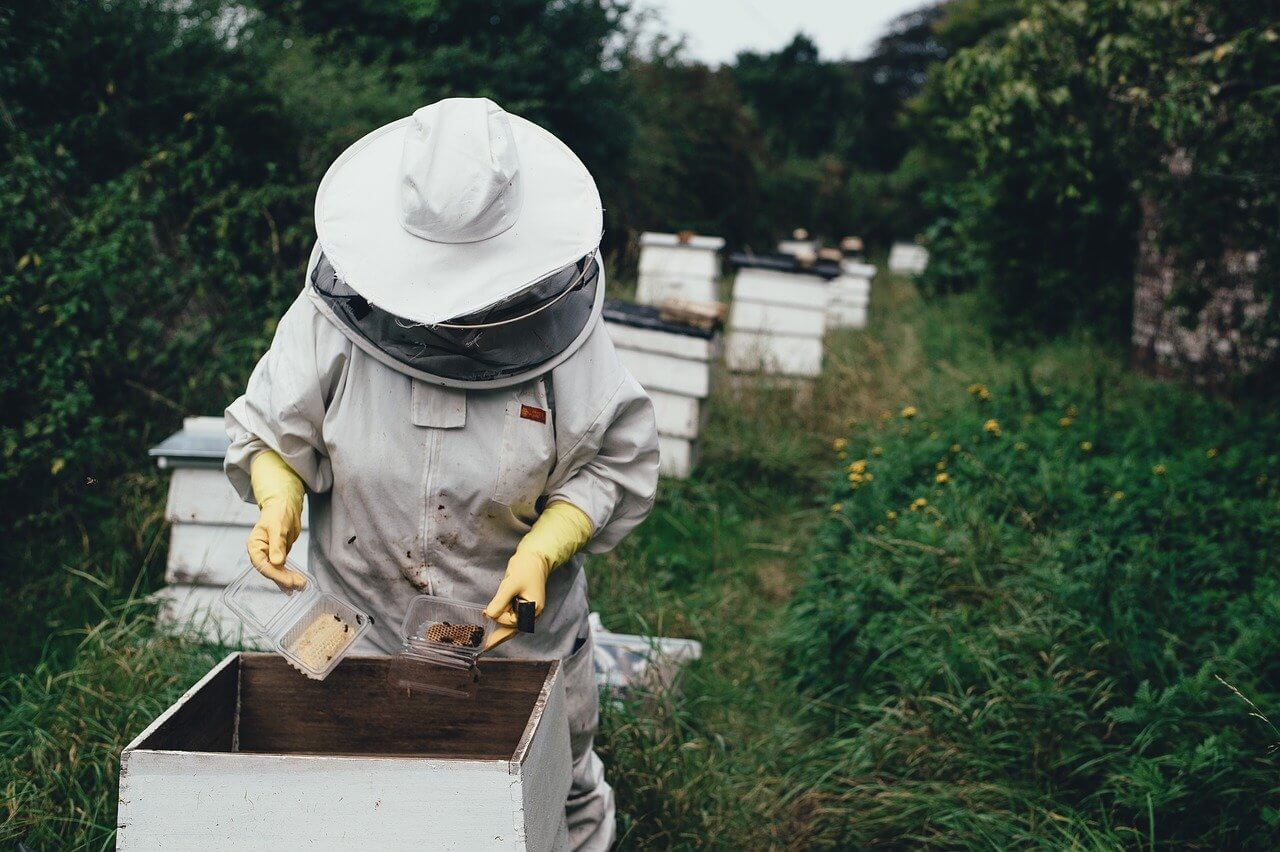
A nice, tight ball of bees gathered closely on a tree branch indicates that the queen is with them. This is very desirable.
If the bees are flying around and you can’t really tell whether the queen is there or not, it’s good to have a queen excluder on hand to place over the box once you’ve caught the bees. Let the box sit for a few moments and see how the bees behave.
If the worker bees make their way out through the queen excluder and fly away, you can be certain that the queen is not inside your box.
On the other hand, if loose bees fly to the box and go through the excluder to get inside, you can be certain that you do have the queen.
What Should You Do If You Don’t Have The Queen?
Even if you didn’t get the queen, you still want the bees. You can add them to another colony that you may already have, or if you have quick access to a queen, you can start them off in their own hive with a new queen.
Don’t Rush!
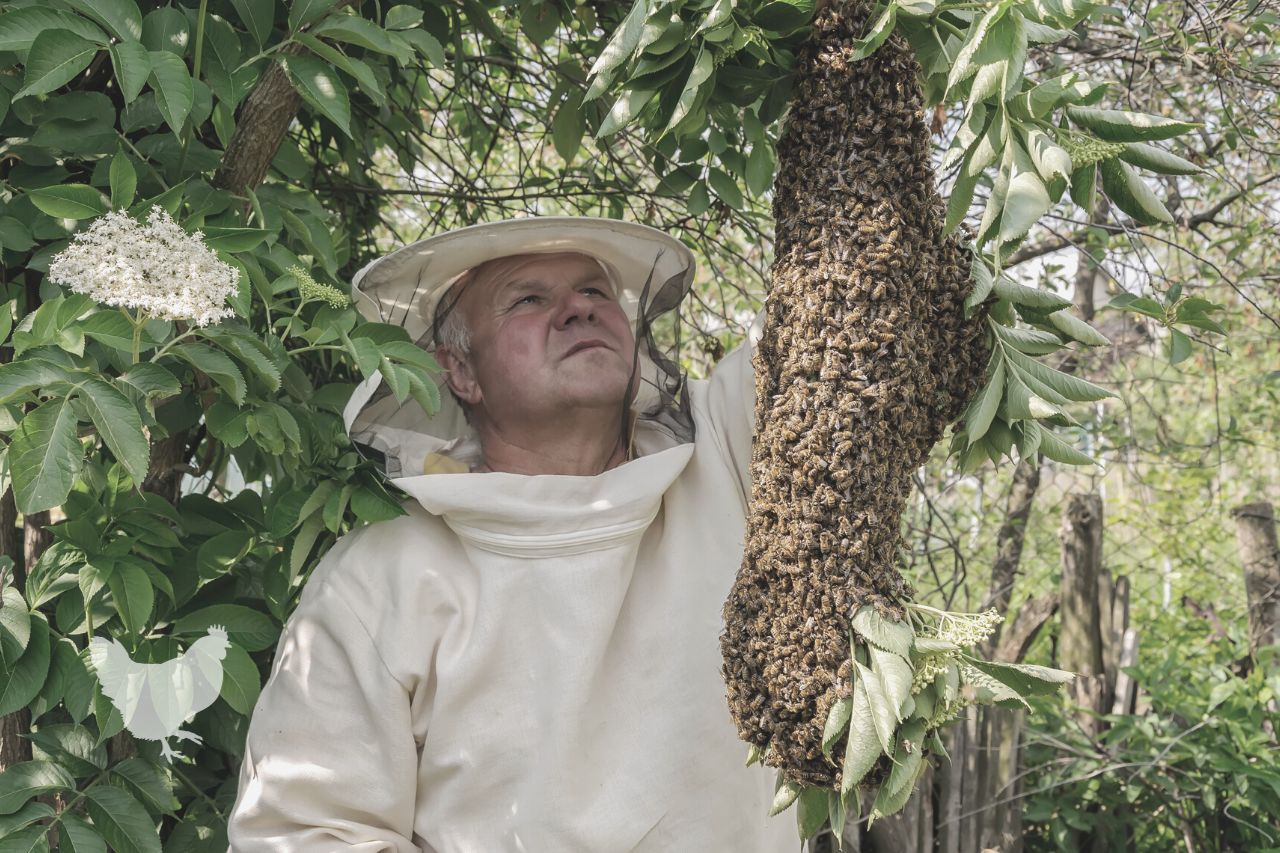
When you get to the new location, set the container full of bees down near the hive or a nuc box and get everything ready for them. Allow them to sit for a while so that they can settle down a bit.
Open up the unoccupied hive or nuc box. You’ll want to remove a few frames so that there’ll be plenty of space to put the bees. It’s best if the hive or box already has honey stores and some drawn comb.
Once all is ready, uncover/open your box full of bees and shake, scoop or brush them gently into the waiting hive or nuc box. Take care to disturb the bees as little as possible. This will encourage them to settle in and stay in their new home.
Make Sure The Bees Have Enough To Eat
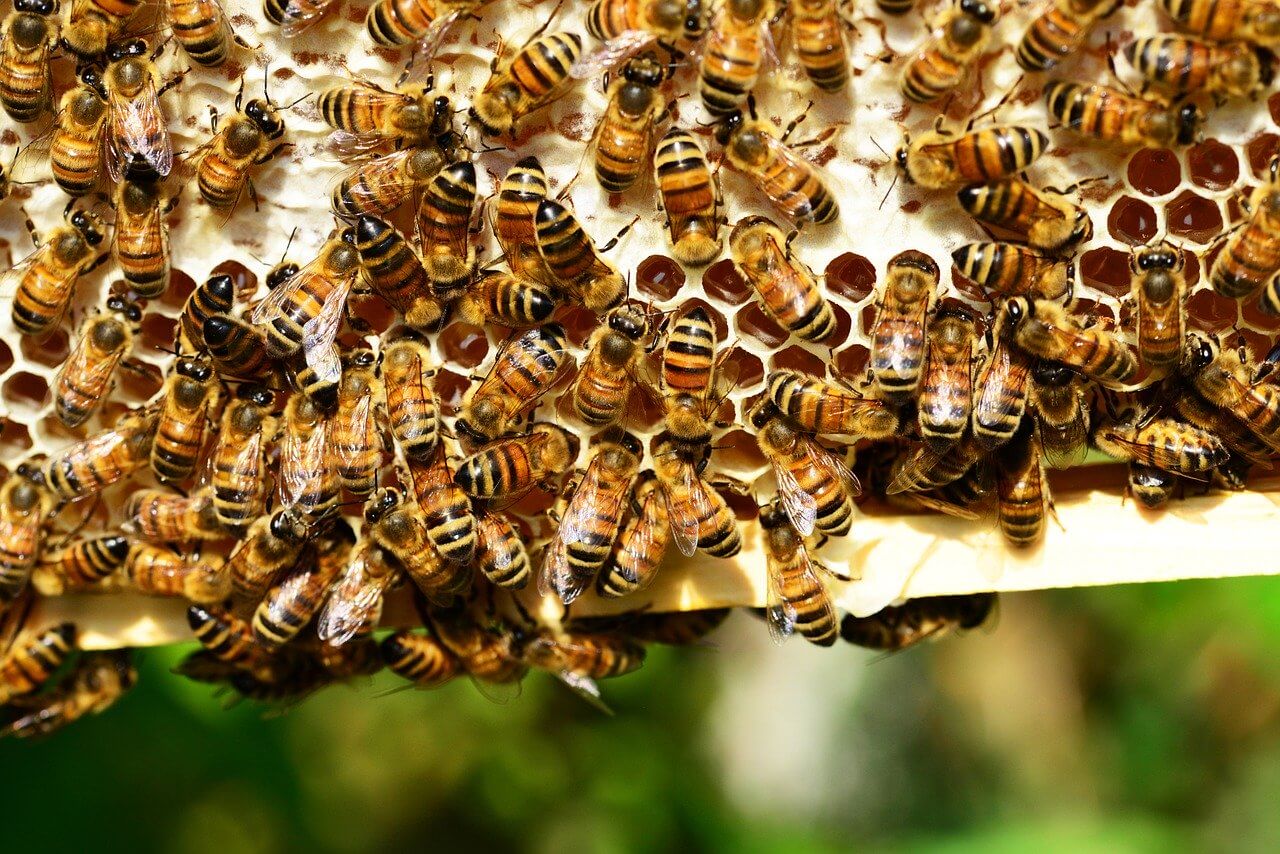
If the hive is completely empty and has no honey stores or comb, you’ll need to feed the bees for a number of weeks until they’ve become established by drawing their own comb, and building up stores of pollen and honey.
Carefully reinsert the frames that you have removed. Take care not to crush any of the bees. Provide a sugar block or sugar syrup to feed the bees for a few days. You may also want to add a few frames that already have honey and drawn comb.
Close up the hive and allow the bees to settle in. Set the empty box down close to the entrance of the hive or nuc box.
As the bees settle in, you may notice that some of the workers gather in groups of about a half-dozen on the sides of the hive.
They’ll raise their abdomens and fan their wings to let other bees know that the queen is here and this hive is now home. If all goes well, as the sun sets, all the bees will go inside and that will be that.
After a couple of days, perform a cursory inspection just to make sure that everything is going well and that the queen has settled in.
After this initial inspection, you can simply check on them once weekly or every other week just as you would any other settled hive.
Do Newly Relocated Swarms Need Special Food?
Since these bees are starting off with little or no food stores or drawn comb, they’ll need support. Set up a top feeder and keep the bees well supplied with a sugar syrup that is two parts plain white sugar and one part water.
Be sure that the sugar is thoroughly dissolved before feeding. You can do this by bringing the mixture to a boil, and simmer it for about five minutes. Allow it to cool thoroughly before feeding it to the bees.
Some beekeepers simply put the sugar and water into a blender and mix it on high for a couple of minutes to make certain that the sugar is completely dissolved.
Keep feeding your bees until they are well established, have drawn comb on their own and you see that the queen has begun to lay eggs. Be patient because all of this may take several weeks to occur.
When Are You Most Likely To Find A Swarm Of Bees?
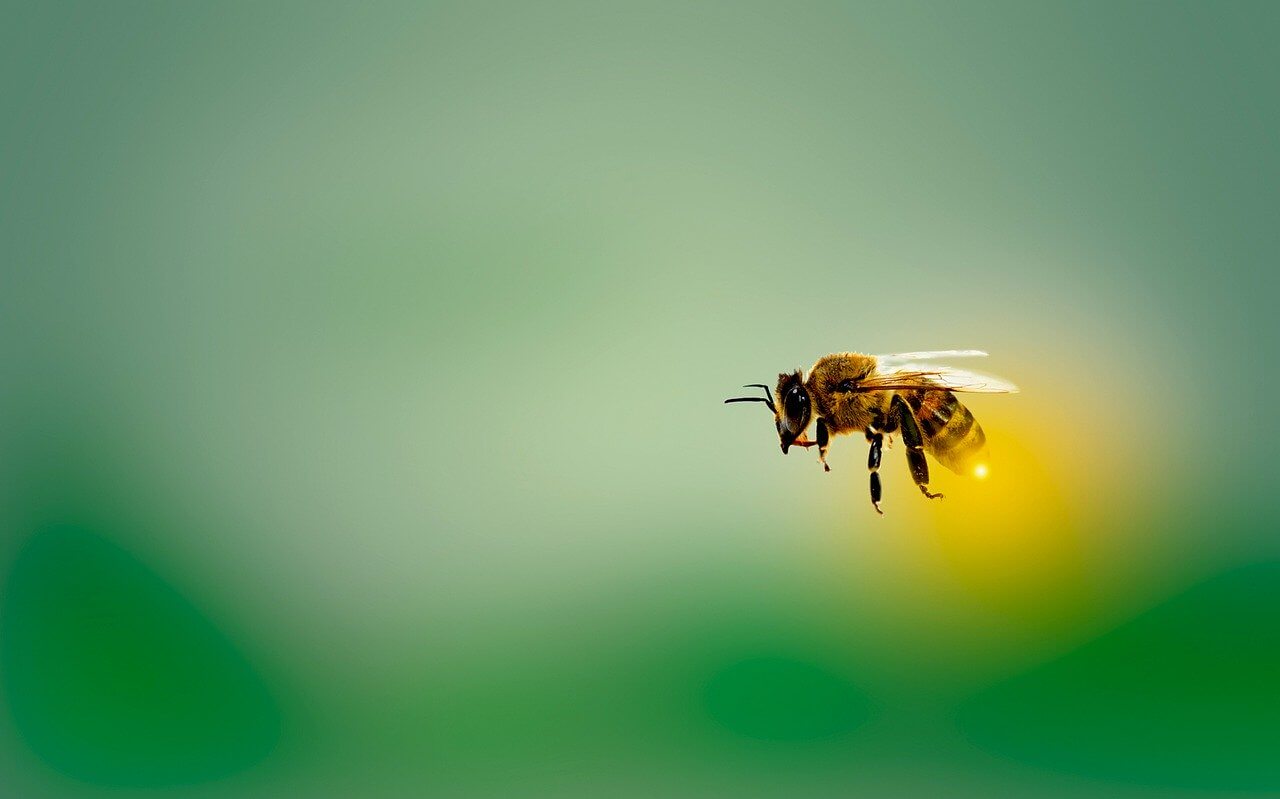
In terms of time of day, you’re most likely to see swarms during the warmest times of day. Typically this is in the afternoon between 1 o’clock and 4 o’clock.
In terms of season, you can find bees swarming any time throughout the honey production season, but if it’s late in the season you may not want to bother with them.
If you catch them early in the springtime, they’ll have plenty of time to get themselves established and begin producing honey. The later in the season it gets, the less time they will have to become established and strong before winter sets in.
If you do gather a swarm in the late summer or autumn, know that you will need to feed them continuously throughout the winter to keep them alive.
How Can You Tell If Your New Bees Are Happy?
Bees that are focused on getting used to their new home will engage in orienting behavior. You’ll see groups of them flying in clusters around the front of the hive, facing the hive.
When they do this, they are orienting themselves to the location of the hive in relation to landmarks and the sun. When they do this, it means that they are accepting their new home.
Very rarely, bees will dislike their new home and may bundle together and swarm off. This is quite rare, though. You should not worry that this will happen if you take care to prepare the nuc or hive appropriately.
How To Catch & Install A Swarm
Frequently Asked Questions
Q: Is swarming always an indication that a bee colony has become overcrowded?
A: No, sometimes the catalyst for swarming is the opposite of thriving and success. If honey bees’ living conditions become unfavorable for survival, they may swarm in search of a better living situation. Unfavorable living conditions could be the result of scarce food and water, disease and/or parasite infestations, interference by people or animals, bad weather conditions, lack of ventilation, or problems with the queen bee.
A: If you come across a swarm of flying insects, you can be fairly confident that it is a group of beneficial honey bees, not more aggressive social insects. Honey bees are more likely to increase their numbers to the point of swarming because their entire colonies are more likely to survive cold winters intact. Other social insects such as bumble bees, yellow jackets, and paper wasps only have new queens during the winter.
Q. What should I do if I don’t want a swarm of honey bees?
A: Swarms of honey bees typically hang around for a short period, usually finding new housing within a few hours to a day or two. So, unless you want to catch and keep them, waiting for them to move on is often the best course of action. Otherwise, you might locate a local beekeeper who may be able to relocate them.
Q: What if a swarm of bees invades my hummingbird feeders, birdbath or other yard features?
As mentioned, swarms don’t last long, and they are not usually dangerous. Waiting may be your best course of action; however, if lots of bees are gathering around your hummingbird feeders and water sources during very hot, dry weather it may mean that they just are not able to find enough nectar and water in the wild.
Use these tips to interrupt or redirect them without harming them:
- During the evening, when the bees are not around, take down the feeders, water features, etc. Leave them down for a few days so that the bees will get out of the habit of frequenting them.
- Simultaneously, set up bee waterers in other areas of your yard that are out of the way. These can consist of trays of marbles or pebbles and water. This combination ensures that the bees can get a drink without drowning.
- Plant a bee garden (or set up planters) so that they can get the nectar and pollen they need. Good choices in plants include catmint, Russian sage and lavender. A native plant garden will also help them, and it will return year after year with little or no effort on your part.
Q: What time of year is best for catching a swarm of bees?
A: A 17th century farmers’ proverb about swarming bees goes “A swarm in May is worth a load of hay; a swarm in June is worth a silver spoon; but a swarm in July is not worth a fly.” This means that when swarms occur later in the year, there will be less time for bees to settle in a new hive, collect pollen and make honey. For this reason, late swarms are less valuable to people than first or early swarms. By the way, an old-fashioned term for an early spring, first swarm is “an erst of bees.”
Q: Is a group of bees always called a swarm?
A: There are several different ways to refer to a group of bees. The term you choose should be based on the bees’ activity. A dense group of bees flying together is a swarm. You can also call a thick cluster of bees resting on or hanging in a ball from a tree limb or other surface a swarm (or simply a cluster or a ball).
An angry, agitated group of bees (e.g. one whose hive has been disturbed) can rightly be called a horde.
A few bees flying around busily on a summer day does not qualify as a swarm or a horde, but they might rightly be called a rabble or a drift.
A group of bees is living together in harmony and cooperation is called a colony. Some people also call this sort of group a hive of bees or a nest of bees. An old-fashioned term for this sort of cooperative bee society is “a grist of bees”.
A bike of bees is an old English term in which “bike” means nest, colony or swarm.
Q: What does the term “bees knees” mean?
A: When you say something is “the bees knees”, you mean that it is the best or the most valuable. This may be a reference to the fact that bees carry sacs of pollen on their knees, a very valuable commodity for bees, indeed!
Q: Why do we say we are “making a beeline” when we go straight to a destination?
A: After forager bees locate a good nectar source, they go back to the hive and perform a “waggle dance” to tell the other bees of the find. Armed with this information, the other bees can fly straight to the nectar source without any hesitation or detours. This is a beeline.
It is best to stay away from angry bees!!!